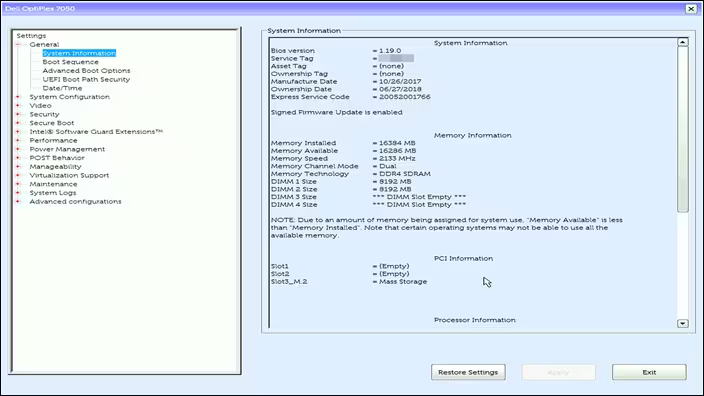Accessing the BIOS (Basic Input/Output System) on a Dell laptop is essential for configuring hardware settings, diagnosing issues, and performing system-level changes. Here’s a step-by-step guide on how to access the BIOS on a Dell laptop:
Start or Restart Your Dell Laptop
Ensure your Dell laptop is powered on. If it’s already running, save any ongoing work and restart the laptop to access the BIOS.
Identify the Correct Key
During the boot-up process, Dell laptops use specific keys to access the BIOS. Common keys include F2, F12, Del, or Esc. The exact key may vary based on the laptop model or BIOS version.
Press the Correct Key Promptly
Entering BIOS Through Windows Settings (Optional)
Alternatively, if your Dell laptop is already running Windows, you can access the BIOS through the Settings menu:
- Open the Start menu and click on Settings.
- Go to Update & Security.
- Select Recovery from the left sidebar.
- Under “Advanced startup, click Restart now.
- Once the laptop restarts, go to Troubleshoot > Advanced options > UEFI Firmware Settings and click Restart to access the BIOS.
Navigating the BIOS
Once in the BIOS setup utility, you’ll be presented with a blue or gray screen with various tabs and settings. Use the keyboard’s arrow keys to navigate between different sections such as “Main,” “Boot,” “Advanced,” etc. Be cautious while making changes to avoid unintended alterations that could affect your laptop’s functionality.
Exiting the BIOS
After making any necessary changes or simply viewing settings, navigate to the “Exit” or similar tab within the BIOS. Follow the on-screen instructions to either save changes and exit or discard changes and exit. Press the specified key (usually F10) to save and exit BIOS.
Security Measures and Passwords
Some Dell laptops may have BIOS passwords or security features enabled. If prompted for a password upon accessing the BIOS, enter the correct password to proceed. If you don’t have the password, contact Dell support for assistance.
Final Thought:
Accessing the BIOS on a Dell laptop is a fundamental step for system management and configuration. By following these steps and using the correct key during the boot process, you can easily enter the BIOS setup utility to adjust settings or diagnose issues, empowering you to manage your Dell laptop more effectively.
